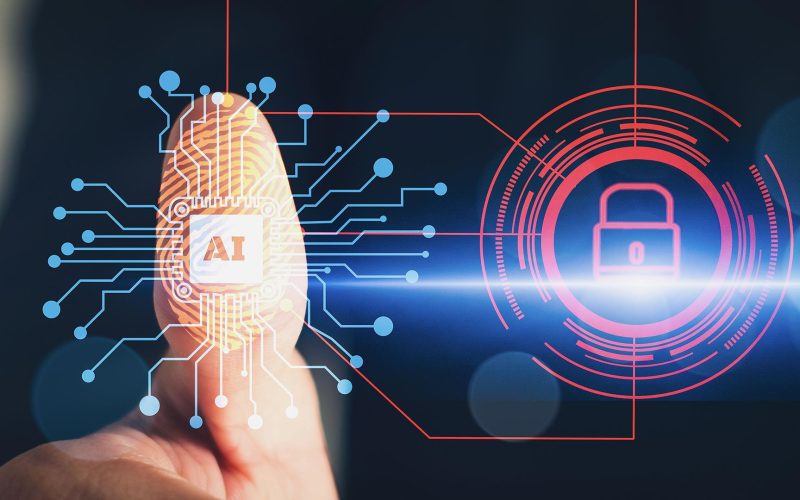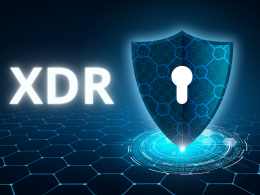Introduction
In today’s digital age, cyber threats are growing faster and more sophisticated. Every day, hackers find new ways to break into systems, steal data, and disrupt businesses. This makes protecting sensitive information more important than ever.
Thankfully, technology has a powerful ally—Artificial Intelligence (AI). AI is changing the game in cybersecurity by detecting threats early and responding quickly. Unlike traditional methods that react after an attack happens, AI allows companies to be proactive, stopping attacks before they cause harm.
In this article, we will explore how AI works in cybersecurity, the benefits of proactive threat detection, and why AI-powered responses are vital for protecting data in an increasingly dangerous online world.
What Is AI in Cybersecurity?
Artificial Intelligence refers to computer systems designed to think and learn like humans. In cybersecurity, AI systems analyze huge amounts of data to find patterns and spot anything unusual.
Traditional security tools rely on fixed rules to detect threats. These rules work well for known risks but often fail against new or hidden attacks. AI, however, learns from data and adapts, making it smarter over time. It can detect unusual behavior, even if the exact attack method is new.
How AI Helps in Proactive Threat Detection
Proactive threat detection means finding signs of cyber attacks before they happen or at the very start. Here’s how AI makes this possible:
1. Analyzing Large Volumes of Data Quickly
Networks produce enormous amounts of data daily. AI can scan all this data faster than humans or traditional software. It looks for anomalies—small changes in how users or systems behave that might indicate a threat.
2. Behavioral Analysis
AI builds profiles of normal behavior for users and devices. When something unusual happens, like a user logging in from a new location or a device sending large amounts of data suddenly, AI raises an alert.
3. Detecting Zero-Day Attacks
Zero-day attacks are brand-new threats that no one has seen before. Because AI looks for unusual activity rather than known malware signatures, it can catch these threats early.
4. Threat Intelligence Integration
AI can pull data from many sources worldwide, learning about the latest threats and adjusting defenses instantly.
AI-Powered Response: Stopping Attacks Fast
Detecting a threat early is only half the battle. Responding quickly is just as important. AI-driven cybersecurity tools can automate responses to reduce damage.
Here’s how:
- Automatic Isolation: AI can block suspicious users or devices instantly to stop the spread of malware.
- Alert Prioritization: AI ranks threats by risk level, helping security teams focus on the most urgent issues.
- Self-Healing: Some AI systems can fix vulnerabilities automatically, like patching weak spots before hackers exploit them.
- Real-Time Notifications: Teams get immediate alerts with detailed information to act quickly.
Benefits of AI in Cybersecurity
1. Faster Threat Detection
AI can find threats in seconds that might take humans hours or days.
2. Improved Accuracy
By learning from data, AI reduces false alarms, allowing security teams to focus on real risks.
3. Cost Efficiency
Automating routine security tasks saves money and frees experts to handle complex problems.
4. 24/7 Protection
AI never sleeps, providing constant monitoring without breaks or distractions.
5. Scalability
As businesses grow, AI systems can handle increasing amounts of data and devices easily.
Real-World Examples of AI in Cybersecurity
Many companies are already using AI to strengthen their defenses:
- Banks use AI to detect fraudulent transactions quickly.
- Healthcare providers protect patient records with AI that monitors network activity.
- Cloud services use AI to secure millions of users and devices.
- Governments rely on AI to defend critical infrastructure from cyber attacks.
Challenges and Considerations
While AI offers many advantages, it also brings some challenges:
- Data Privacy: AI systems need lots of data to learn, raising concerns about privacy and data protection.
- False Positives: Though AI improves accuracy, sometimes harmless actions are flagged as threats.
- Skilled Workforce: Experts are needed to manage and interpret AI systems correctly.
- Evolving Threats: Hackers also use AI to create smarter attacks, so cybersecurity must stay ahead.
The Future of AI in Cybersecurity
AI’s role in cybersecurity will continue to grow as technology evolves. Future AI tools may include:
- More advanced predictive analytics to forecast attacks before signs appear.
- Better integration with other technologies like blockchain and quantum computing.
- Greater focus on privacy to ensure data used for AI is safe.
- Collaboration across industries to share threat intelligence in real time.
Conclusion
Artificial Intelligence is transforming cybersecurity by enabling proactive threat detection and rapid, automated responses. With cyber attacks becoming more complex, AI helps businesses stay one step ahead—detecting unusual behavior, blocking threats early, and reducing damage.
By embracing AI, organizations can protect sensitive data more efficiently, save costs, and provide continuous 24/7 security. While challenges remain, the benefits of AI in cybersecurity are clear. It’s no longer a question of if, but when and how businesses will fully adopt AI to safeguard their digital futures.












